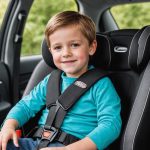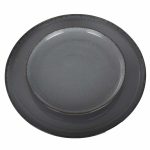Headlight alignment significantly impacts safety and compliance for classic British cars on UK roads. Misalignment can lead to poor visibility and failed inspections. This guide covers essential techniques for achieving proper headlight alignment, ensuring you adhere to road regulations while preserving the integrity of your classic vehicle. Whether you're a seasoned enthusiast or a novice, mastering this skill enhances your driving experience and maintains the charm of your classic car. Explore the methods that will keep your headlights shining bright and compliant.
Understanding Headlight Alignment for Classic British Cars
Proper headlight alignment is crucial for both safety and compliance with UK regulations. Ensuring your classic car's headlights are correctly aligned helps avoid dazzling other drivers and enhances your visibility on the road. Classic British cars often present unique challenges in this area due to their distinct designs and older technology.
In the same genre : Essential Tips for Effective Fuel Line Insulation in UK Performance Cars
Classic cars may have headlight designs that differ from modern vehicles, making alignment more complex. These vehicles often require specialised knowledge to adjust their headlights correctly. For instance, older models might use sealed-beam headlights, which necessitate different alignment procedures compared to modern halogen or LED systems.
In the UK, road compliance requires headlights to be aligned within specific parameters to pass the MOT test. This involves checking the beam pattern and ensuring it meets the legal standards. Misaligned headlights can result in MOT failure, leading to potential fines or being barred from the road until corrected.
Also read : Mastering Air Suspension Setup for Your British SUV: A Guide to Conquering Any Terrain
To maintain compliance, regular checks and adjustments are recommended. Tools like beam setters or professional services can assist in achieving precise alignment. Ensuring your classic car adheres to these standards not only keeps you legal but also enhances driving safety.
Tools and Equipment Needed for Headlight Alignment
Ensuring precise headlight alignment is essential for safe driving and compliance. For classic British car owners, having the right tools is crucial for effective maintenance. Essential tools for headlight alignment include:
- Beam Setters: These devices help measure the alignment of the headlight beams accurately. They are indispensable for achieving the correct angle and height.
- Spirit Levels: Utilised to ensure the car is parked on a level surface before adjustments begin, preventing skewed results.
- Screwdrivers and Wrenches: Necessary for adjusting the alignment screws on the headlights. Different cars may require specific sizes, so having a set is advisable.
For classic car enthusiasts, sourcing these tools can be part of the challenge. Many specialised automotive shops offer these items, but they can also be found online. Alternatively, some owners may choose to improvise with available tools, such as using a flat wall and marked tape to gauge alignment. However, this requires a keen eye and understanding of the alignment process.
Investing in the right headlight alignment tools not only ensures compliance but also enhances vehicle safety, allowing classic car owners to enjoy their drives with peace of mind.
Step-by-Step Guide to Aligning Headlights
Aligning your classic British car's headlights can seem daunting, but with a structured DIY guide, it becomes manageable. Follow these steps to ensure your headlight alignment process is precise and effective.
Preparing the Vehicle
Begin by positioning your car on a level surface. This is crucial to avoid skewed results during the alignment process. Ensure the vehicle is unloaded and the tyres are properly inflated. A spirit level can help confirm the flatness of the surface.
Measuring Headlight Position
Next, measure the distance from the ground to the centre of the headlight. Use tape to mark this height on a wall in front of the vehicle. This reference will guide your adjustments. Remember to measure the distance between the two headlights to ensure symmetry in alignment.
Adjusting Headlight Angles
For accurate headlight alignment, adjust both vertical and horizontal angles. Use a beam setter to assess the current alignment. If unavailable, a flat wall can serve as a guide. Adjust the headlights using the screws or knobs provided, ensuring the beam falls within the marked parameters. Check both vertical and horizontal alignment to avoid dazzling other drivers or reducing your visibility.
Common Issues and Troubleshooting Tips
When it comes to headlight troubleshooting for classic British cars, understanding common problems can save time and ensure safety. Misalignment is a frequent issue, often caused by suspension changes or uneven tyre pressure. This can lead to poor visibility or dazzling other drivers.
One of the simplest maintenance tips is to regularly check tyre pressure and suspension settings, as these can affect headlight alignment. If you notice your beams are too high or low, a quick adjustment of the alignment screws might be necessary. Ensure your car is on a level surface before making any changes.
Sometimes, issues are more complex, such as faulty headlight mounts or electrical problems. In these cases, it's best to seek professional help. A mechanic with experience in classic cars can diagnose and fix these issues efficiently.
If your headlights flicker or fail to turn on, the problem might be electrical. Check for loose connections or a failing bulb. Replacing bulbs regularly is a simple way to maintain optimal performance.
By following these maintenance tips, you can address common headlight issues and maintain your vehicle's safety and compliance.
Understanding UK Road Compliance Standards
Navigating UK road regulations can be challenging, particularly for owners of classic British cars. Ensuring vehicle compliance is essential to avoid penalties and maintain safety.
Key Headlight Regulations
UK regulations stipulate that headlights must be properly aligned to prevent dazzling other drivers and ensure adequate road illumination. This involves meeting specific beam pattern standards, which are assessed during the MOT test. Non-compliance can result in test failure, fines, or restrictions on road use.
Compliance Checks for Classic Vehicles
Classic vehicles often require tailored compliance checks due to their unique designs. Owners should regularly inspect their headlights for alignment and functionality. Professional services or tools like beam setters can assist in these checks, ensuring that the vehicle meets legal requirements.
Consequences of Non-Compliance
Failing to adhere to UK road regulations can have serious consequences. Misaligned headlights not only jeopardise safety but can also lead to MOT test failure. This could result in fines or even the vehicle being barred from the road until issues are corrected. Regular checks and adjustments are crucial for maintaining compliance and ensuring safe driving conditions.
Maintenance Best Practices for Classic Car Headlights
Maintaining the headlights of a classic car is an essential part of preserving its charm and ensuring safety. Regular headlight maintenance routines can significantly enhance their effectiveness and longevity.
Regular Maintenance Routines
Implementing a consistent maintenance schedule is vital. Regularly inspect the headlights for any signs of wear or damage. Look for cracks or clouding on the lens, as these can impact light output. Timely inspections help identify issues before they affect visibility.
Cleaning and Restoration Tips
Keeping headlights clean is crucial for optimal performance. Use a mild soap and water solution to gently clean the lenses, avoiding abrasive materials that can cause scratches. For restoration, consider using a headlight restoration kit. These kits can help remove oxidation and restore clarity to aged lenses, improving both appearance and function.
Importance of Timely Inspections
Timely inspections are critical in classic car care. Checking the alignment and brightness of the headlights ensures they meet safety standards. Addressing any electrical issues, such as flickering or dimming, promptly can prevent further complications. Regular maintenance not only preserves the classic aesthetic but also ensures safe driving conditions.
Visual Aids and Resources
For classic British car enthusiasts, headlight alignment resources are invaluable in mastering the alignment process. Visual guides, such as diagrams and images, can significantly enhance understanding by providing clear, step-by-step visuals. These aids illustrate the correct alignment angles and positions, making it easier to follow along and achieve precise results.
In addition to static images, recommended videos and tutorials offer dynamic demonstrations of headlight alignment. These resources often cover various classic car models, showcasing unique alignment techniques specific to each design. Watching these tutorials can provide practical insights and tips that are difficult to convey through text alone.
For those seeking to deepen their knowledge, there are numerous additional reading materials available. Books and online articles delve into the intricacies of classic car maintenance, including detailed sections on headlight alignment. These resources often include historical context, enhancing appreciation for the craftsmanship involved in classic car care.
By leveraging these visual aids and resources, classic car owners can gain confidence in their ability to maintain their vehicles. Whether through diagrams, videos, or in-depth reading, these tools offer comprehensive support for achieving optimal headlight alignment.
















